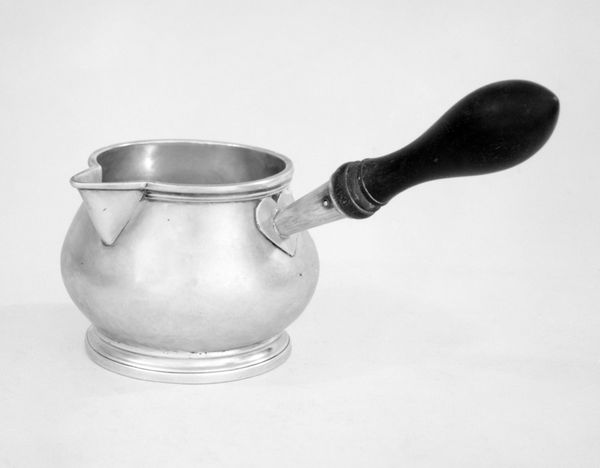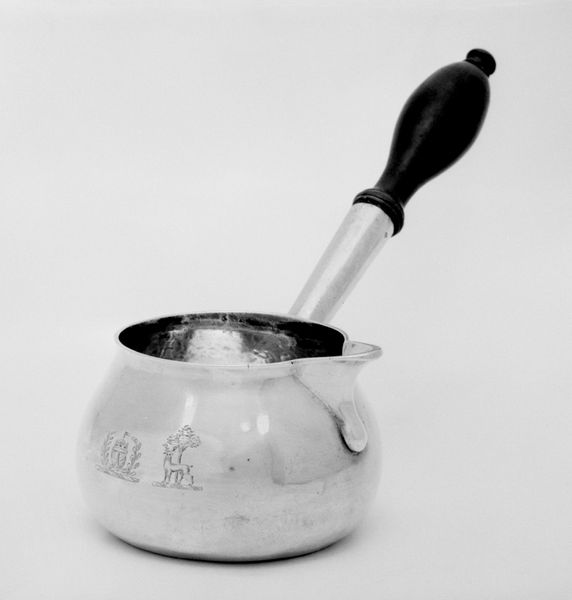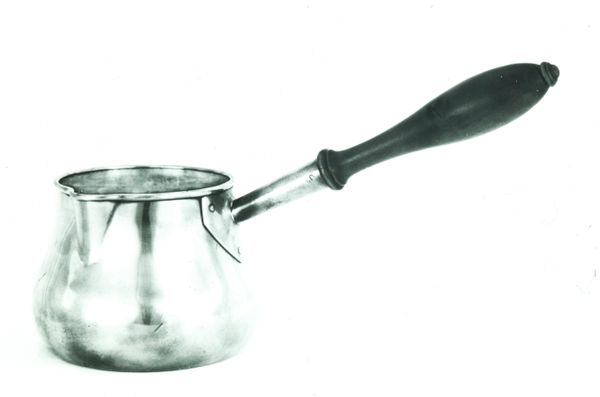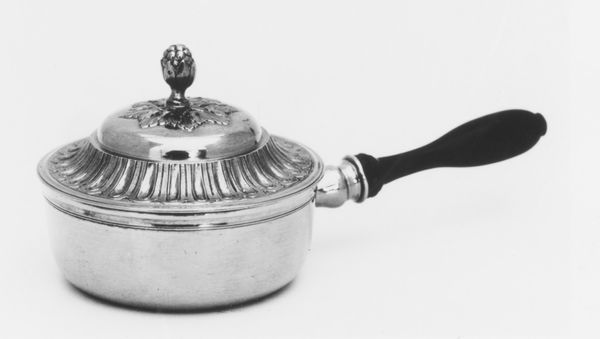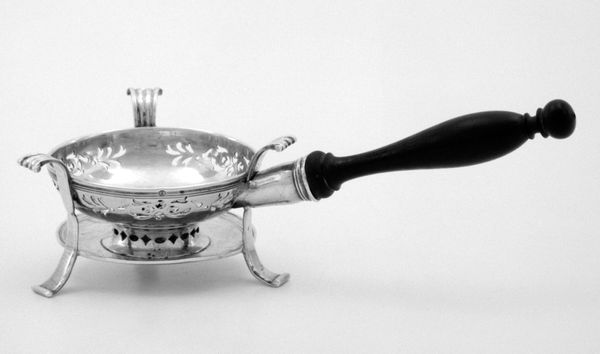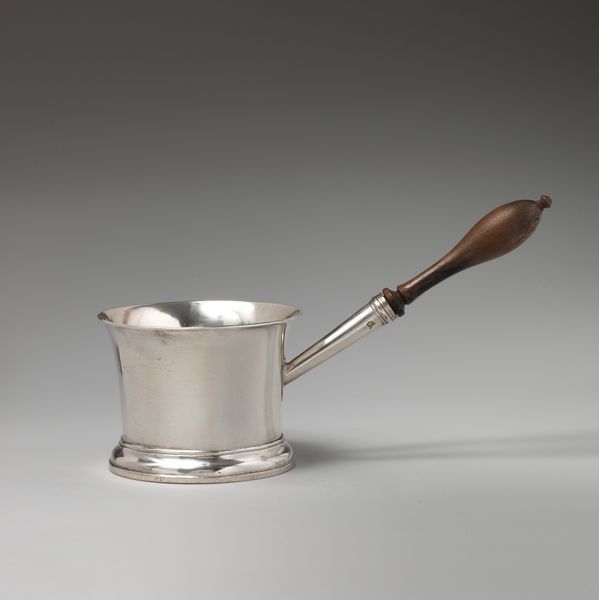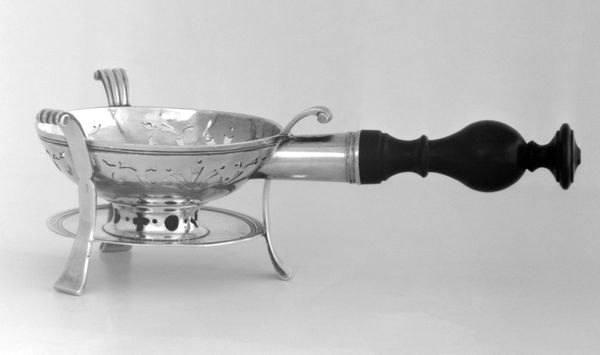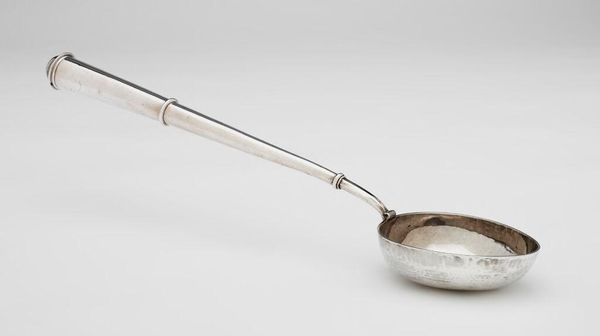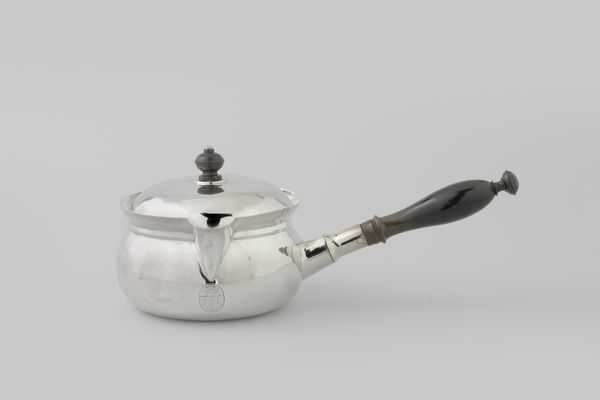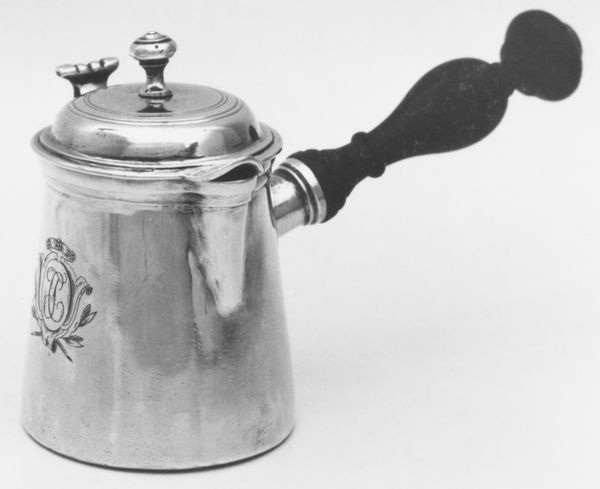
silver, metal, sculpture
#
silver
#
baroque
#
metal
#
sculpture
#
decorative-art
Dimensions: 1 7/8 × 5 in. (4.8 × 12.7 cm)
Copyright: Public Domain
Curator: Here we have a silver Saucepan crafted between 1720 and 1730, attributed to William Williamson I. It resides here at the Metropolitan Museum of Art. Editor: It’s deceptively simple, isn't it? The eye moves so smoothly over the curves, drawn to the high gleam of the silver, and the strong diagonal of the handle adds visual dynamism to what could have been quite a static object. Curator: Precisely. Silverwork of this era straddles the line between functional object and display of wealth. Consider the social implications— owning such a piece would denote not only access to precious materials but also the employment of highly skilled silversmiths. We’re talking about specialized labor. Editor: And yet, the design is elegantly understated. Note how the craftsman manipulated the light, reflecting the smooth finish that makes it appear incredibly luxurious. It appears perfectly balanced, in a purely aesthetic sense, creating a silent declaration of its formal harmony. Curator: True, though "balance" can also be seen as an attempt to legitimize the wealth it signifies within the stricter social mores of the time. Excess could be perceived negatively, so luxury had to be tempered. The silver itself was likely sourced from mines controlled by colonial powers. So its creation has quite a brutal backstory. Editor: So we move from harmony to an indirect form of violence embedded in the artwork itself? That changes the reflection considerably! Curator: Indeed, and looking at its wear suggests daily use. How different from grand silver displays, such labor-intensive craft, the mark of human history... Editor: Seeing its use shifts it, even for me. Thanks for letting me consider new material connections and to question its place and legacy.
Comments
No comments
Be the first to comment and join the conversation on the ultimate creative platform.
